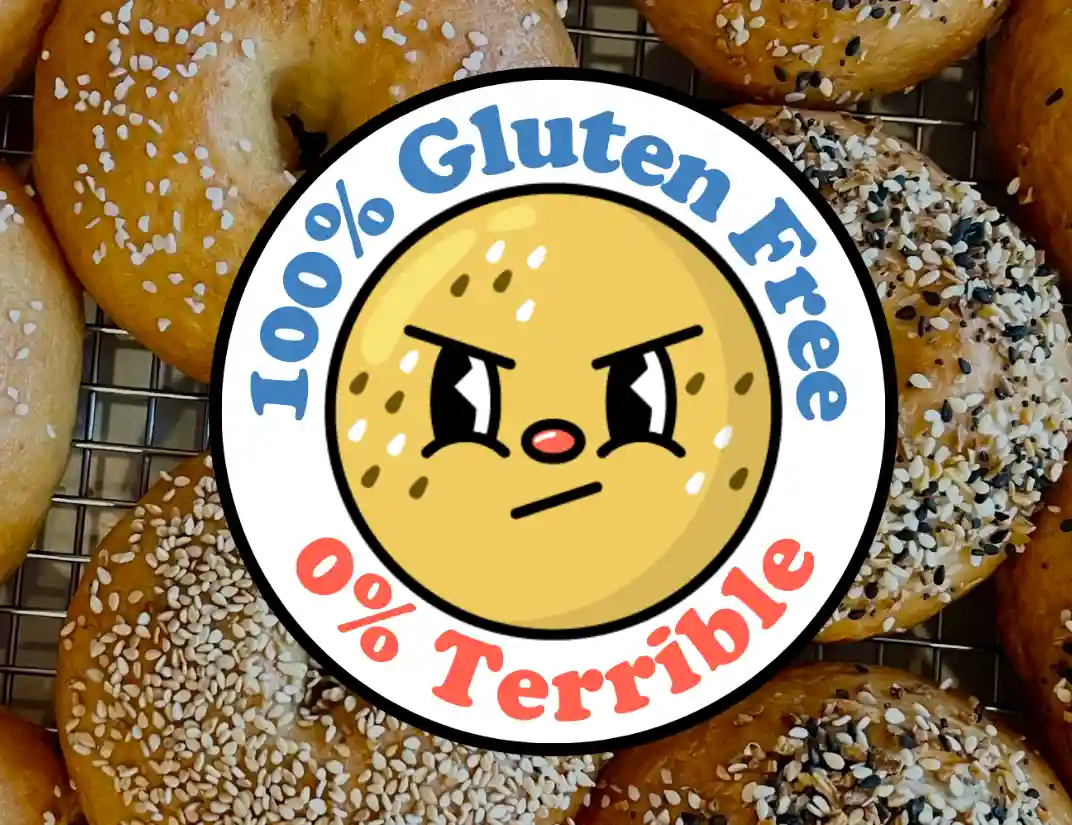Celiac.com 08/13/2024 – Gluten Free Watchdog, an advocacy site for people with celiac disease, recently responded to a study by Moms Across America, which claimed that Trader Joe’s Everything Gluten-Free Bagels contained nearly 300 ppm of gluten—a controversy that has already led to a class action lawsuit against Trader Joe’s.
The gluten testing was performed by Health Research Institute (HRI), an ISO17025 accredited lab approved by the FDA, and examined 46 products, including 32 GFCO-certified ones. It found that nearly 15{28c990c5ec46bc12a8a6e519302e6740183955f80b5fc5356445979e411ee393} of the certified products exceeded the 10 ppm gluten-free standard, with nearly 10{28c990c5ec46bc12a8a6e519302e6740183955f80b5fc5356445979e411ee393} surpassing the FDA’s 20 ppm gluten-free limit, meaning they cannot be labeled gluten-free and should be subject to a product recall. A recent analysis by Celiac.com uncovered potential issues with GFCO’s certification process, which may have contributed to the high failure rate found in the study, and suggests ways to improve the certification program.
Gluten Free Watchdog, however, suggests that these findings might be false positives, possibly due to HRI not using an extra protein to prevent non-specific binding during testing. Gluten Free Watchdog tested three different batches of Trader Joe’s bagels using two different assays (R5 ELISA and G12 ELISA) with and without a milk additive for protein blocking. They argue that the inconsistent results—depending on whether the milk additive was used—indicate that HRI should rerun their tests with the additive, as their original results might have been false positives.
HRI’s Response
Celiac.com reached out by email to John Fagan, Ph.D., Chief Science Officer at HRI for comment about Gluten Free Watchdog’s article, and according to him:
“(W)e used the Romer (AgraQuant) G12 ELISA test, exactly according to the Romer protocol. The person who did the lab work is a highly experienced scientist who has decades of experience in conducting ELISA tests. The Romer G12 ELISA is recommended by GFCO as a reliable method. There was nothing about the Trader Joe’s sample that was strange or out of the ordinary and it contained no chocolate and therefore extra protein was not called for.”
When describing their testing procedure he explained:
“We tested, first, the undiluted extract in duplicate. Those tests exceeded the calibration curve. We then made two dilutions of the extract and tested those in duplicate. Duplicates matched in both cases and the two dilutions were quantitatively consistent. That was the value that we reported.” Further: “We have the exact sample that we tested before, and have retested it and it still came out positive.”
Romer, the manufacturer of the AgraQuant G12 ELISA test, supported Dr. Fagan’s claims, stating that while the milk additive is an option, it is not mandatory for all tests, and while certain ingredients like chocolate, soy, and oats, may require adding an extra protein during the testing procedure to prevent non-specific binding, they confirmed that no such ingredients were present in the Trader Joe’s bagels.
Tara J. Miller, Vice President of Marketing at Trader Joe’s, however, claims that their tests on the same batch tested by HRI showed the bagels met FDA and GFCO standards for gluten-free labeling (below 10 ppm). When Celiac.com asked Dr. Fagen how his lab could find high gluten in a batch where Trader Joe’s found none, he concurred with the possibility of “hot spots” within the sample, which could explain the discrepancy.
Why Did Gluten Free Watchdog Test Different Batches?
Gluten Free Watchdog’s testing did not involve the same batches of bagels tested by HRI. When Celiac.com asked Dr. Fagan for his comment on the Gluten Free Watchdog article he replied with:
“I was surprised at the Gluten Watchdog’s article. And the fact that the product contained no chocolate raises questions about their explanation. The obvious explanation for the discrepancy between the Gluten Watchdog’s results and ours is not even considered in their article, namely that they did not test the same sample that we tested. They didn’t ask for that sample but we told them that we would be quite happy to set up an opportunity for them to test that sample. I suspect they would have confirmed our result. Also, during our phone call with Watchdog, they did not suggest the modification of the method where extra protein is added.”
(a recent post by Gluten Free Watchdog disputes this characterization of their contact)
The last email we received from Dr. Fagan on this topic further emphasized his position:
“We would be willing to share that lot with any lab that wants to test it. We would send multiple blinded samples, one of which would be the sample we tested as being positive and there would be other samples that would be indistinguishable but would be positive and negative. This would test their ability to detect the level of gluten that we found present in the sample and verify whether the sample we tested as positive was positive with their test method. We have decades of experience dealing with conflicting results on lab tests and it is this kind of routine that clarifies things definitively.”
Unfortunately, Gluten Free Watchdog’s posts do not address how HRI found zero detectable gluten in most of the products they tested, including three types of bagels similar to Trader Joe’s bagels, one of which also contained brown rice flour and sorghum flour (Canyon Bakehouse Plain Bagels). If HRI’s testing required extra protein for accuracy, shouldn’t these very similar products have also shown false positives?
Do We Accept or Reject the Results of an FDA Accredited Laboratory?
Celiac.com believes that Gluten Free Watchdog’s recent stance is misguided and deviates from its mission to protect people with celiac disease from gluten exposure. Instead of cautioning people to avoid the products found to contain high gluten levels and possibly calling for their recall and reassessing GFCO’s certification standards, Gluten Free Watchdog is creating confusion by questioning HRI’s testing protocol and results.
Given Celiac.com’s understanding of the Romer AgraQuant G12 ELISA test and its testing protocol, and the fact that the Romer test is on GFCO’s Approved Kit List, we see no reason to doubt the validity of HRI’s results or their testing competence. We continue to recommend that people with celiac disease avoid all products in the study that tested at or above 20 ppm of gluten, and for those who are highly sensitive, products that tested at or above 10 ppm.
Read more at: foodriskmanagement.com
Join our forum discussion on this topic, and feel free to comment below.
Source link





